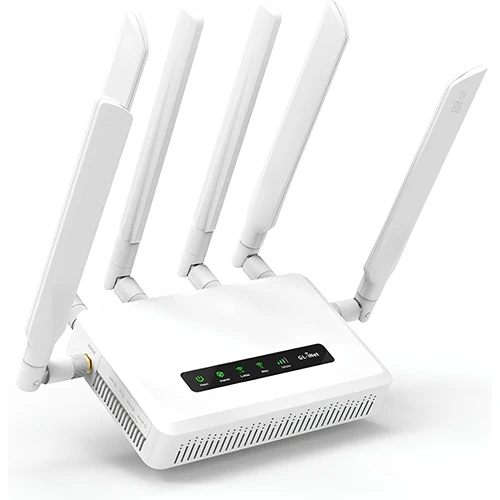AppsSensorsComputersLightingComponentsSecurityEnergyEntertainmentAppliancesHouseholdTelecomHubsNetworkingSelf-HostedCloudPhonesRadiosPlugsBulbsSwitchesLaptopsMini PCSoCCPUGPUNPUMemoryMotherboardNVMEWiFiFansLocksDoorbellsCamerasAlarmsSensorsMetersPlugsSolarBreakersTVsStreamingSpeakersAudio SystemsSmart KitchenSmart RefrigeratorsSmart DishwashersSmart Coffee MakersSmart OvensWashersDryersWater HeatersRefrigeratorsVacuumsMopsToothbrushesMirrorsScalesHumidifiersButtonsClimatePresenceZigbee HubZ-Wave HubWiFi HubBluetooth HubMatter & Thread HubLoRa HubMulti-Protocol HubSwitchEnclosureCurtainsWiFi APRoutersTablets
Internet Setup Guide for GL.iNet Travel Router Firmware V4.x
Published: July 4th 2025 @ 12:39AM
Unlock Seamless Connectivity Anywhere: Instructional Guide for Setting Up Various ISP Types
In the smart home era, staying seamlessly connected while traveling is no longer a luxury but a necessity. The GL.iNet travel routers offers powerful connectivity options for remote workers, digital nomads and frequent travelers. This comprehensive guide will walk you through setting up your GL.iNet router using various ISP types, including dedicated 5G modems, captive portals, Starlink satellite services, and general WiFi networks. By mastering these setups, you will maintain reliable, secure internet access wherever your travels take you.
Accessing the Router's Web GUI
Begin by powering up your GL.iNet travel router and connecting your laptop or mobile device via WiFi or Ethernet cable to the router. Once connected, open your web browser and navigate to http://192.168.8.1. The router's login page will appear. Enter the default credentials and username located on the device label or user manual (typically admin/password). Once logged in, you will access the intuitive GL.iNet GUI dashboard.
Connecting via Dedicated 5G Modems (USB Tethering)
For dedicated 5G modems, connect your modem device directly to the router's USB port. In the GUI dashboard, select Internet from the left-hand menu, then choose USB Modem. The router typically auto-detects your modem; if it doesn't, manually select your modem model from the dropdown menu. Click Connect to initiate the connection. Verify connectivity by checking the status indicator at the top right of the dashboard. This setup is ideal for areas with robust cellular coverage and delivers impressive speeds, particularly suitable for data-intensive tasks and IoT device management.
Navigating Captive Portals and Public Hot-spots (Hotel, Café, Airport WiFi etc...)
Captive portals can present challenges because they require additional authentication through a webpage. Connect your smart phone or computer to the GL.iNet router by first powering on the router and then connecting your device to the router's WiFi or Ethernet. Then access your router's Admin Panel by visiting http://192.168.8.1 in your computer or smart phone's web browser. Next, connect your router to the public WiFi by selecting Internet > Repeater. Choose the available public WiFi network and connect. Once connected, open another browser tab on your device (still connected to the travel router) and attempt accessing any web page. The captive portal page should load automatically. Complete the authentication or agree to the terms and conditions. If the captive portal does not load automatically, manually enter the gateway IP of the hotspot (typically 192.168.1.1 or check network properties for the correct gateway IP) directly into the browser. Once authenticated, the router will share this connection securely with your devices.
Setting Up Starlink Satellite Service
Starlink provides excellent connectivity, especially in remote or rural areas. To connect your travel router via Starlink, plug the Ethernet cable from your Starlink kit directly into the WAN Ethernet port. In the router's GUI, navigate to Internet > Ethernet, ensure DHCP is enabled, and click Apply. Starlink typically assigns IP addresses automatically. Confirm your connection status from the dashboard and enjoy high-speed satellite internet, ideal for smart home applications requiring stable and fast connectivity.
Repeater Mode Setup for General WiFi Networks
When connecting to existing WiFi networks, use Repeater Mode. Navigate to Internet > Repeater in the GUI, and scan for available networks. Select the network you want to join, enter the network password, and click Connect. The GL.iNet travel router will extend this network securely, offering enhanced privacy and consistent connectivity for multiple devices.
Shareable and Trustworthy Travel Networking
Another notable advantage of employing a travel router is the ability to securely share internet access among multiple trusted devices and users. When traveling with friends, family, or colleagues, a single, secure connection through the travel router can serve all devices, simplifying connectivity logistics. The internal firewall and security policies you configure protect each connected device, ensuring everyone enjoys secure, reliable internet access without compromising individual device safety.
Using WAN Ethernet for Wired Connections
For wired ISP connections or wired hotel internet, use the WAN Ethernet port. Connect an Ethernet cable from the hotel wall outlet or ISP modem directly to your GL.iNet travel router's WAN port. In the GUI, navigate to Internet > Ethernet, set the connection type to DHCP for automatic IP assignment, or choose Static to input provided ISP details manually. Click Apply to establish the connection.
Troubleshooting Edge Case Scenarios: Captive Portal Failures
Occasionally, captive portals won't load correctly due to DNS caching issues or pop-up blocking. To resolve this, clear your browser's cache and cookies, temporarily disable any pop-up blockers, and retry accessing the captive portal. Alternatively, manually typing the router's IP (192.168.8.1 by default) or the captive portal IP into your browser can force the authentication page to appear. Restarting the travel router after initial captive portal authentication can also solidify the connection, ensuring smooth and uninterrupted internet access.
By following these detailed steps, you can leverage the powerful GL.iNet's travel router to maintain secure, reliable, and versatile internet connections (including VPN or WireGuard access), enhancing your smart home and travel experiences.
